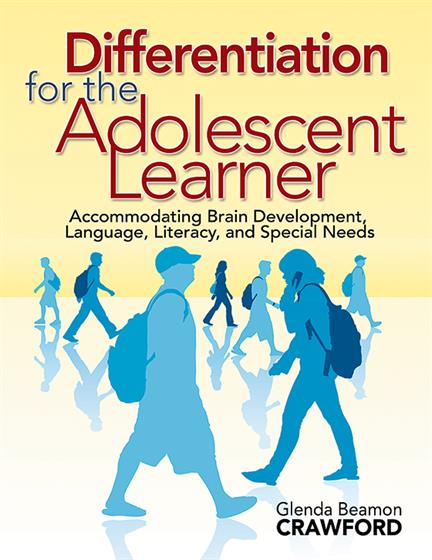Foreword by David H. Reilly
Acknowledgments
About the Author
Introduction and Overview
1. Differentiation and the Learning Brain
It's All About Good Teaching Practice
The Learning Brain
Universal Design for Learning (UDL)
Cognitive Access for Learning
Evolving Conversations About Differentiation
Developmentally Responsive Differentiation
The Language of Differentiation
Content Differentiation
Process Differentiation
Product Differentiation
Powerful Learning Experiences
Differentiation Design Principles
Summary and Looking Ahead
2. Differentiation and Adolescent Development
Adolescent Development
Adolescents as Learners
Personal Connection
Emotional Engagement
Appropriate Intellectual Challenge
Purposeful Social Interaction
Metacognitive Development
A Supportive Learning Environment
A Prime Time for Learning
Brain-Compatible Instruction: A Summary
Summary and Looking Ahead
3. Adolescent-Centered Differentiation: Evaluation, Expectation, Engagement, and Exploration
Start With the Students
A Curriculum of Consequence
Getting and Keeping Their Attention
Flexigle Opportunities for Interaction
Summary and Looking Ahead
4. Metacognitive Extension in Adolescent-Centered Differentiation
The Power of Adolescent Metacognition
Cognitive Modeling
Metacognitive Coaching
Guided Metacognitive Inquiry
Teaching for Transfer
Differentiation in PBL: Two Examples
Summary and Looking Ahead
5. A Differentiated Learning Environment: The Affective, Social-Emotional, and Physical Dimensions
Invitations to Learn
The Social Dimension of the Learning Environment
Varying the Physical Environment
Managing the Differentiated Learning Environment
Summary and Looking Ahead
6. The Intellectual Dimension in the Differentiated Environment
The Intellectual Dimension of the Learning Environment
Interaction in the Differentiated Learning Environment
The New Geography of Learning
Summary and Looking Ahead
7. Learning Patterns and Profiles
Patterns of Responsive Teaching
Determining Student Variance
Clusters of Commonality
Cluster 1: Gifted or Advanced Learners
Cluster 2: English Language Learners (ELL)
Cluster Group 3: Students With Learning Challenges
Summary and Looking Ahead
Epilogue: A Shared Commitment to Equity
Project-Based Learning
In Conclusion
Glossary of Adolescent-Centered Differentiation Terminology
References
Index



